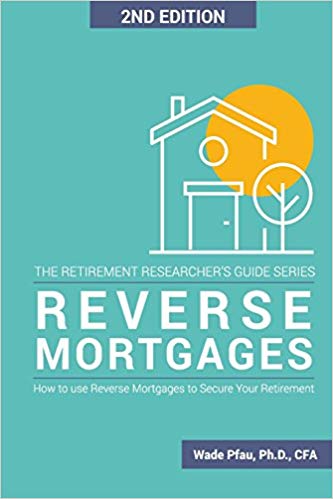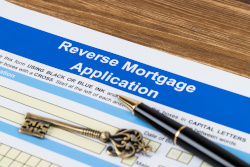Reverse Mortgage
When used properly, it can be an effective financial planning solution
The following information comes primarily from the book Reverse Mortgages: How to use Reverse Mortgages to Secure Your Retirement by Wade Pfau. Stout Bowman & Associates has no affiliation with Dr. Pfau or his publisher.
At one time, reverse mortgages had a bad reputation. In addition to being heavily marketed by celebrity spokesmen, abuses and misuse were rampant. As a result, the federal and state authorities stepped in and tightly regulated the products (as evidenced by the fact that the paperwork to get a reverse mortgage now exceeds that of a regular mortgage!). Like most financial planning solutions, it has a specific purpose that can provide a particular benefit or address a measurable risk. In this article, we will cover only the Home Equity Conversion Mortgage (HECM), the most popular type of reverse mortgage, and the one most suitable for retirement income planning.
Updated on October 20, 2022
There is another kind of reverse mortgage available, known as a Jumbo Reverse Mortgage. A jumbo reverse mortgage is a supersized reverse mortgage that lets older owners of high-value homes borrow up to $4 million of the equity in their property. These loans, also referred to as private or proprietary reverse mortgage loans, aren’t bound by the same regulations as government-backed home equity conversion mortgages (HECMs), resulting in higher borrowing limits (hence the name jumbo), but also potentially fewer protections. You can find out more information on jumbo reverse mortgages in this article.
A reverse mortgage is conceptually the same as a traditional mortgage, except that there is no set monthly repayment required. Instead of using the money only to purchase or renovate a house, the proceeds of the reverse mortgage can be used by the borrower for virtually anything they wish. To qualify, you (and any other person on the title — Texas requires all borrowers) must be at least 62 years of age (there are special rules if a spouse is less than 62), have no other federal debt, have enough income to cover tax, insurance and maintenance expenses associated with the house and receive certified counseling on home equity options. The property must be your primary residence and meet all FHA property, flood, health and safety standards and receive an FHA appraisal.
Here's what you need to know about reverse mortgages to determine if you should consider using it as part of your retirement planning
- First, let's dispel one of the major myths about a reverse mortgage — you are not selling your house to the mortgage lender. As far as your ownership of the your house is concerned, it is the same situation you (or your heirs) would be in if you have a traditional mortgage. When the house is no longer yours (or your primary residence), the loan must be repaid. In fact, one advantage of the reverse mortgage is that, should your house sell for less than what is owed to the lender, the lender cannot come after you or your other assets to satisfy the loan. This is because, as part of the loan fees, you pay for an insurance policy required by the FHA that will make up the difference between the proceeds of the sale of the home and any shortfall in the loan payoff.
- Therefore, either you or your heirs can pay off the loan by:
- Writing a check for the balance due (from financial assets or a new mortgage).
- Selling the home and using the proceeds (plus the FHA insurance, if necessary) to pay off the loan.
- Letting the lender sell the home to satisfy the loan (and any proceeds above the loan payoff will still be paid to you or your heirs).
- Origination fees are based upon the home's value, not the costs associated with obtaining the loan. The maximum fee that can be charged is set by the government.
- Closing costs tend to be much higher than those associated with a traditional mortgage. Normally, the closing costs are rolled into the loan amount, but can be paid directly. One difference is the cost of mortgage insurance, which is required for a reverse mortgage, but may be optional for a traditional mortgage. The insurance premium for a traditional mortgage is based upon the amount of the loan, which is decreasing as payments are made. For a reverse mortgage, the premium is based on the value of the house, and the loan amount typically is increasing.
- There are four options for using the proceeds of a reverse mortgage (one or more options may be combined):
- Receive a lump sum payment of all or part of the amount
- Receive a tenure payment – a fixed monthly payment – for as long as the you are eligible for the loan (i.e., the house is still your primary residence)
- Receive a term payment – a fixed monthly payment for a specified length of time
- Establish a line of credit to be used (or not) as requested
- The amount available through a HECM is called the Principal Limit Factor (PLF) and is calculated using the following factors:
- the appraised home value
- the homeowner's age (for couples, the age of the younger spouse)
- the lender's margin
- the 10-year London Interbank Offered Rate (LIBOR) swap rate
- Interest on the loan balance grows at the effective rate, which is equal to sum of the one-month LIBOR rate, the lender's margin and the annual Mortgage Insurance Premium (MIP), currently fixed at 0.5%. Rather than get bogged down in these complications, there is an online reverse mortgage calculator available to provide a good estimate of the net amount available from a HECM.
How Can You Use A Reverse Mortgage In Your Financial Planning?
- Portfolio/Debt Coordination For Housing
- Pay off an existing mortgage — eliminate what is probably a substantial monthly expense
- Transition from a traditional mortgage to a reverse mortgage
- Fund home renovations to allow for aging in place, such as ramps, accessible entrances, etc.
- Use a HECM for the purchase of a new home if a traditional mortgage is not available because of your lower qualifying income in retirement
- Portfolio/Debt Coordination For Retirement Spending
- Spend your home equity first to leverage your portfolio upside potential — allow your investments to appreciate instead of being used for income
- Coordinate HECM spending to mitigate sequence risk
- Use tenure payments to reduce portfolio withdrawals — money withdrawn is no longer creating additional portfolio value
- Funding Source For Retirement Efficiency Improvements
- Tenure payments as alternative to an annuity — payout rates from a reverse mortgage can be comparable to that of an income annuity
- Social Security delay bridge — delaying Social Security benefits will increase your eventual monthly payout, but you may need to replace those early benefits with withdrawals from your retirement funds; having the mortgage proceeds available allows you to avoid those withdrawals
- Manage your tax bracket or pay taxes for Roth conversions — income from a reverse mortgage is not taxable
- Pay premiums for existing long-term care insurance policy
- Preserve Credit As Insurance Policy
- Support retirement spending after portfolio depletion — use your home equity for expenses without having to sell the home
- Protective hedge for home value — if your home's value falls below what is owed on the reverse mortgage, FHA insurance will pick up the shortfall
- Provides a contingency fund for spending shocks (in home care, health expenses, divorce settlement)
What Can Go Wrong?
- You MUST pay all taxes, insurance and repairs required to maintain FHA standards. If you don't, the property can be forced into foreclosure. A corollary to this is that, if you're used to escrowing taxes and insurance through your traditional mortgage payment, you will now have to take care to make these payments yourself.
- Once you no longer use the home as your permanent residence, you must pay back the loan. You do not have the ability to turn it into a rental property when, for example, you downsize your living arrangements. If you (and your spouse, if he or she is a co-borrower) move to a full-time care facility for more than a year, the loan also becomes due.
- Fewer financial assets will pass to your heirs, because the reverse mortgage will almost always decrease the equity in your home. It is essential that you have a discussion with them before closing on a reverse mortgage so that all heirs are aware of the possible ramifications.
- The interest accumulating in the reverse mortgage is not tax deductible until it is paid, which, in most cases, will be when the mortgage is paid off. If the mortgage has been in force for quite a while, the accumulated interest will be substantial, and could be used by the homeowner to offset the taxes due on a large Roth IRA conversion, or by the heirs to offset inheritance taxes.
- If your spouse is not a listed borrower because he or she was under 62 years of age at the time of the loan closing, and the borrower passes away, there are special rules that must be followed to prevent that spouse from having to repay the loan immediately instead of remaining in the home.
- You base your decision only on the hype and marketing, instead of consulting with your financial advisor.






